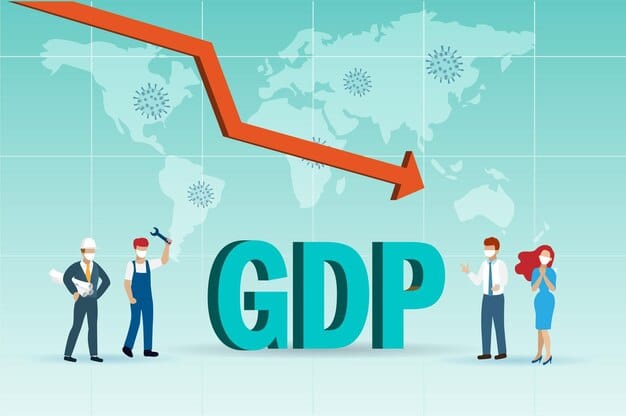
India’s Q4 FY25 GDP Surges to 7.4%; FY26 Growth Forecast Between 6.3% and 6.5%
By Aaerm Law Associates | June 2, 2025
India’s economy showed unexpected strength in the final quarter of FY25, registering a robust GDP growth of 7.4%, well above the market expectation of 6.7%. This strong performance was mainly driven by a sharp rise in net indirect taxes and steady growth across key sectors like services, manufacturing, and construction.
📊 Q4 FY25: Strong Finish to the Fiscal Year
India’s Q4 GDP growth of 7.4% marks the highest quarterly growth since early 2024. A 12.7% increase in net indirect tax collections played a crucial role in this surge. Higher compliance, stronger consumption, and increased public spending contributed to this tax windfall.
Key Contributors:
- Manufacturing and Construction: Benefited from ongoing infrastructure development and housing demand.
- Services Sector: Especially strong in public administration and financial services.
This data underscores the effectiveness of fiscal strategies focused on capex-led growth and economic resilience.
📅 FY25: India Remains Fastest-Growing Major Economy
Despite global uncertainties, India’s full-year GDP grew by 6.5% in FY25, maintaining its lead as the fastest-growing major economy.
What Fueled FY25 Growth?
- Public Capital Expenditure: Government infrastructure investments stayed on track.
- Rural Recovery: Demand picked up due to increased agricultural output and targeted welfare schemes.
- Service Sector Strength: Continued growth in digital services and professional sectors.
Although private investments remained sluggish, the public sector’s fiscal push helped offset the impact.
🔮 FY26 Outlook: A Cautious Optimism
Looking ahead, major institutions including the Reserve Bank of India (RBI) forecast a GDP growth of 6.3% to 6.5% for FY26. This range, though slightly lower than FY25, still represents strong momentum in a global slowdown scenario.
Supporting Factors:
- Easing Inflation: Fuel and food prices have moderated, improving household purchasing power.
- Monetary Support: RBI’s accommodative stance is expected to continue through mid-FY26.
- Export Diversification: Focus on new markets may help offset risks from trade tensions.
However, geopolitical tensions, global interest rate hikes, and trade policy shifts remain key downside risks.
🧱 Sectoral Performance: Services Lead, Manufacturing Rebounds
Services Sector:
- Growth in Q4 FY25: 7.3%
- Top Sub-sectors:
- Public administration and defense: 8.7%
- Financial and real estate services: 7.8%
Manufacturing:
Rebounded after a slowdown in earlier quarters. Lower input costs and rising domestic demand helped restore momentum.
Construction:
Continued to benefit from affordable housing demand and government infrastructure push.
Overall, all three sectors posted positive contributions to quarterly GDP.
💰 Monetary Policy: Rate Cuts Likely to Support Growth
To boost demand and support economic momentum, analysts expect the RBI to reduce the repo rate to 5.75% by mid-2025.
This dovish policy stance is designed to:
- Lower borrowing costs
- Spur consumption
- Encourage business investments
With inflation largely under control, monetary policy space remains available for further easing.
💡 Investment Trends and Household Savings
According to the latest RBI Annual Report, household savings have improved, creating more room for domestic investment financing without triggering inflation.
This trend is crucial in:
- Supporting MSMEs and startups
- Strengthening capital formation
- Reducing reliance on external borrowing
📈 GST Trends Reflect Economic Health
Rising GST collections indicate strong underlying demand:
- January 2025: ₹1.96 lakh crore (↑12.3% YoY)
- February 2025: ₹1.84 lakh crore (↑9.1%)
- March 2025: ₹1.96 lakh crore (↑9.9%)
These numbers reflect improved compliance and stable consumption patterns.
📝 Conclusion: Strong Momentum with Eyes on Global Headwinds
India’s Q4 FY25 performance shows resilience, robust fiscal strategy, and sector-wide strength. As the country enters FY26, growth prospects remain promising, though external risks require close monitoring.
For sustained momentum, the government must:
- Continue infrastructure spending
- Stimulate private investments
- Focus on job creation, especially in the informal sector
If these areas are addressed, India is well-positioned to maintain its lead as a global growth engine.
